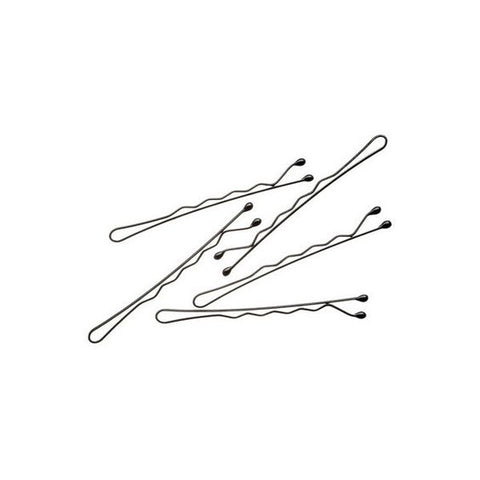How To Keep A Wig In Place Without Glue
Wearing a wig can switch up our look greatly. However, one of the most afraid things is a wig falling off. Fortunately, we have several tips and ways to help your wig steadily stay on your head so you won’t worry about having any embarrassing moments. In this article, we have nearly covered the 6 best ways to keep your wig in place. Whether you want to use double-sided tape, wig glue, or velvet wig grip to hold onto the wig, here is an ultimate blog suitable for you.
Here are 6 tips about how to keep a wig in place firmly without glue on your head, please scrolling down.
1. Wig Tape

Wig tape provides an effective stick between the wig and the scalp. Wig tape can be a long-term choice for securing a wig in place. This is a perfect solution for the bald head with no bio hair, as it can pull on or even damage hairs when removed from the head.
How To Keep A Wig In Place With Wig Tape
Some users may need a bit of practice to apply it seamlessly without wrinkles or air bubbles.
1. Ensure your skin is clean and dry before applying the tape.
2. Cut the tape into manageable strips for easy application.
3. Press firmly to secure the wig in place.
Pros: The size can be customized depending on the way you like.
Wig tape can easily Adhere to polyurethane tabs, as a strong attach which wig tape works.
Cons: remove it may be tricky for you.
2. Silicone wig headband
![]()
Silicone headbands feature a Nonslip drop-shaped extended wig headband. This works not only for women but men, it also offers a way to maintain wig stability.
How To Keep A Wig In Place With a Silicone Headband
1. Wear a wig cap before placing the silicone band.
2. simply put it onto your wig cap.
3. Adjust as needed to cover areas where the wig may shift.
Pros: Easy to tailor size, shape, and location to fit the exact measurement of your head.
Silicone sheets can be used multiple times with proper care and maintenance.
Cons: For exceptionally heavy wigs, additional support may be needed.
3. Wig Gripper

Wig Gripper is often made of Velvet material. The fiber enhances ‘grip’ the wig so keep them in place. It usually can be used for hair loss and for those without hair.
How To Keep A Wig In Place With a Wig Gripper
1. Position the wig gripper on your scalp, ensuring a snug fit.
2. Place it on your head in the right direction: Velcro tabs at the back, by the nape of your neck.
3. Adjust the wig over the gripper for a secure hold.
Pros: A variety of colors can be chosen as you like, and ensure that the color matches your wig color best.
Take it on and take off in one minute.
Cons: you need to change to another one after a short period time in six months, of course, it may last longer when you maintain it well.
4. Wig Cap

A wig cap serves as the foundation for a secure fit. It creates a smooth surface for the wig to adhere to, minimizing movement.
How To Keep A Wig With a Wig Cap
Put on the wig cap from the front of your hairline to the back to cover your natural hair.
Adjust it to sit comfortably on your head. Avoid unnatural bumps and air pockets.
It’s time to wear your wig!
Pros: Smooth Surface: Provides a seamless base for the wig to rest on, reducing friction and potential movement.
Protects Natural Hair: Helps protect your natural hair from any potential damage caused by the wig.
Cons: the only downside you should know about wearing a wig cap is hot and less air flow and causes uncomfortable.
5. Bobby Pins

Bobby pins allow you to pinpoint areas that need extra reinforcement. They are an easy and quick method for securing wigs.
How To Keep A Wig With Bobby Pins
1. Prepare your natural hair before putting on your wig.
2. Insert the pins into the wig cap and your natural hair for added security.
3. The number of bobby pins will vary from person to person as needed to achieve the desired stability. You also can use as many as needed to make sure they in secure.
Pros: They are easy to find and relatively inexpensive.
Bobby's pins can be easily removed without causing damage to the wig.
Cons: Wear should have enough hair for the use of bobby pins.
They may lose when you go out all day long, adjustments will help ensure a consistently secure and comfortable fit for your wig.
6. Wig Clips And Adjustable Straps
Adjustable straps and clips are traditional ways to keep your wig in place, many brand wig stores have these things stitched inside the wig cap for extra security, generally speaking, just wig clips/combs and adjustable straps can get perfect fit without additional support.
Pros: The method is convenient and soft to wear.
Cons: you can use them when the wig is too large, then the wig cap is so small can’t use this method.
Final Words:
The precondition of all methods coming true is choosing a correct size wig that accommodates your head measurement. Whether you opt for wig tape, silicone sheets, a wig gripper, a wig cap, a gel grip band, bobby pins, or wig clips, you can face each day with confidence, knowing your wig will stay securely in place. Choose the method that aligns best with your preferences, needs, and lifestyle.


































Dejar un comentario